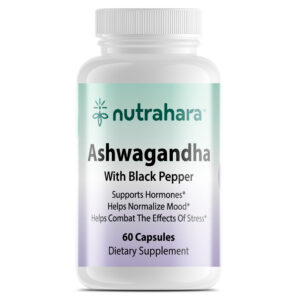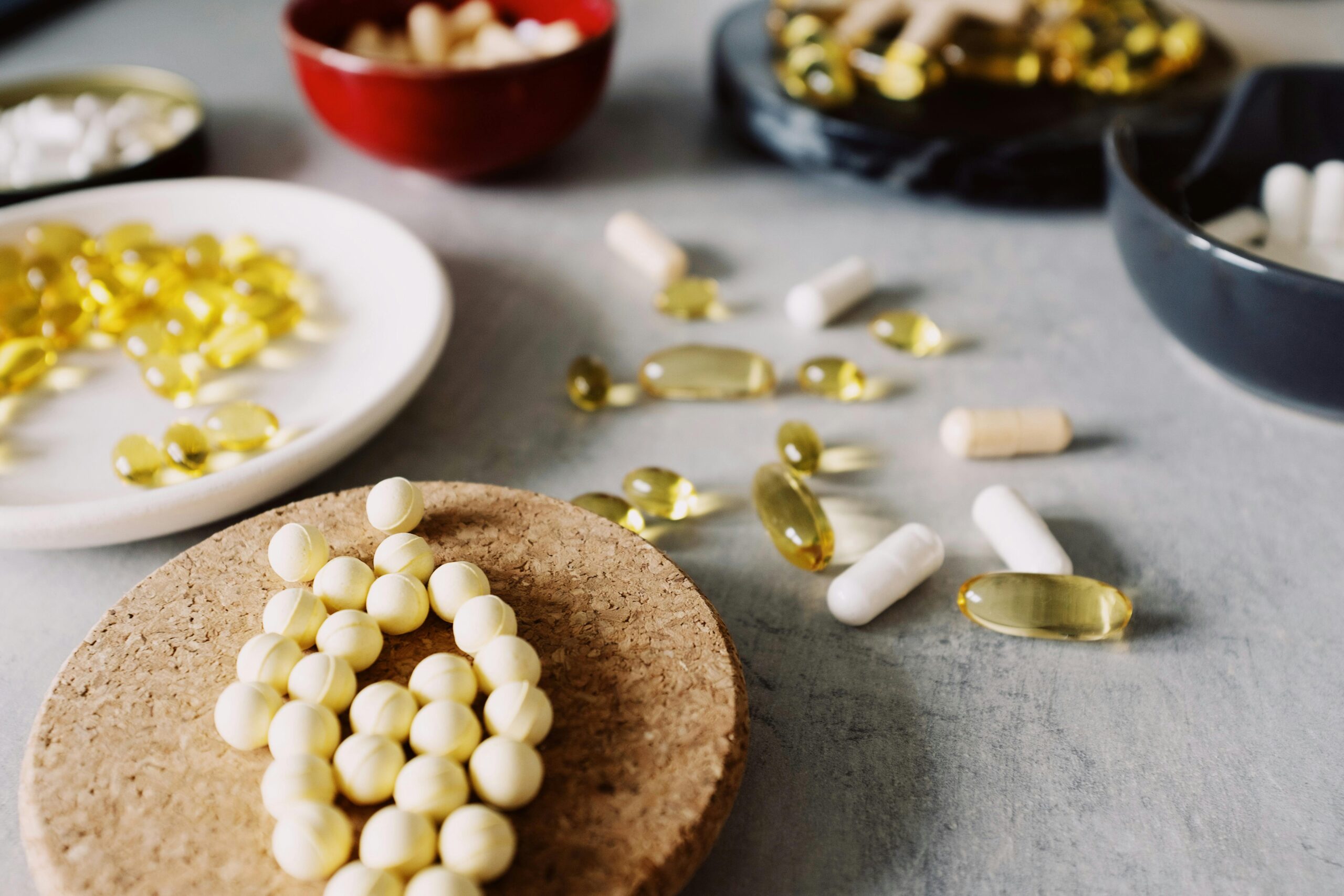
Nutrahara Blog
Nutrahara Blog
7 Proven Strategies for Women’s Hormonal Balance: How to Restore Harmony with Yoga, Supplements, and Essential Oils
1. Introduction
1.1 Why Women’s Hormonal Balance Matters
Hormones are the invisible forces that dictate nearly every aspect of a woman’s health—from energy levels and metabolism to emotional well-being and reproductive health. However, modern lifestyles, chronic stress, and environmental toxins are disrupting women’s hormonal balance at an alarming rate. Unlike other health issues that can be diagnosed with a single test, hormonal imbalances often manifest in subtle ways—persistent fatigue, unexplained weight gain, mood swings, insomnia, digestive issues, and even premature aging.
What’s even less discussed is that hormonal fluctuations affect not just physical health but also mental resilience and confidence. When estrogen and progesterone are imbalanced, women may feel irrational anxiety, self-doubt, and emotional overwhelm, leading to a silent struggle that is often dismissed as “just stress” or “a phase.”
Rather than waiting until symptoms become severe, maintaining women’s hormonal balance should be a proactive practice, not a reactive treatment.
1.2 How to Achieve Hormonal Balance Naturally
Balancing hormones doesn’t require extreme diets or synthetic medications. Nature has provided powerful tools—nutrient-dense foods, movement, relaxation techniques, and plant-based supplements—to support the endocrine system at every stage of life.
This guide explores:
- How diet influences hormonal harmony and which foods can naturally regulate estrogen, progesterone, and cortisol.
- The types of exercise that balance hormones without overloading the adrenal glands.
- The role of yoga and meditation in reducing stress-related hormonal imbalances.
- Supplements and essential oils that target specific hormonal concerns like PMS, menopause, and adrenal fatigue.
Women in their 30s, 40s, 50s, and beyond deserve an intuitive, sustainable approach to hormonal wellness—one that aligns with their bodies rather than forcing extreme interventions. Understanding women’s hormonal balance is the first step to unlocking long-term vitality, emotional stability, and confidence.
2. Understanding Women’s Hormonal Balance
2.1 What Are Hormones and Why Are They Important?
Hormones are the body’s chemical messengers, regulating vital functions such as metabolism, mood, sleep, digestion, and reproductive health. Produced by glands in the endocrine system, these messengers ensure that every part of the body functions harmoniously.
For women, hormonal balance is particularly delicate and influenced by factors such as:
- Menstrual cycles – Fluctuations in estrogen and progesterone impact energy, mood, and metabolism.
- Pregnancy and postpartum changes – Hormonal shifts during and after pregnancy can cause emotional and physical changes.
- Menopause – Declining estrogen levels can trigger symptoms like hot flashes, weight gain, and bone density loss.
- Environmental toxins – Endocrine disruptors found in plastics, pesticides, and processed foods can mimic or block hormone function.
- Chronic stress – Elevated cortisol levels can lead to adrenal fatigue and disrupt the balance of estrogen, progesterone, and thyroid hormones.
When these hormonal shifts become imbalanced, a cascade of health issues can occur.
2.2 Signs of Hormonal Imbalance in Women
Hormonal imbalances manifest differently for every woman, often presenting as a mix of physical, mental, and emotional symptoms. Some of the most overlooked signs of women’s hormonal balance issues include:
Physical Symptoms
- Unexplained weight gain or difficulty losing weight – Insulin resistance and thyroid dysfunction often contribute.
- Hair thinning or excessive hair growth – An imbalance in testosterone and estrogen can cause unwanted hair changes.
- Chronic fatigue and brain fog – Low progesterone and adrenal dysfunction may be culprits.
- Digestive issues – Estrogen dominance can disrupt gut bacteria, leading to bloating and constipation.
- Irregular periods or severe PMS – Estrogen-progesterone imbalances can cause painful cycles or missed periods.
Mental & Emotional Symptoms
- Increased anxiety or depression – Fluctuations in estrogen and cortisol impact mood regulation.
- Irritability and mood swings – Common with both PMS and perimenopause due to hormonal fluctuations.
- Low libido – A decline in testosterone, estrogen, or thyroid hormones can affect sex drive.
These symptoms can stem from various underlying conditions, including polycystic ovary syndrome (PCOS), thyroid disorders, perimenopause, and adrenal fatigue. To learn more about how hormonal imbalances occur and the conditions they represent, refer to this comprehensive guide by Cleveland Clinic.
2.3 Why Addressing Hormonal Balance Early Matters
Ignoring early signs of hormonal imbalance can lead to long-term health risks, including:
- Increased risk of osteoporosis – Low estrogen affects bone density.
- Metabolic disorders – Insulin resistance can lead to diabetes and obesity.
- Chronic fatigue syndrome and adrenal burnout – Constant high cortisol levels weaken the body over time.
Instead of waiting for symptoms to worsen, proactive lifestyle changes can help restore women’s hormonal balance naturally. The following sections will explore how diet, exercise, yoga, meditation, supplements, and essential oils can play a crucial role in achieving hormonal harmony.
3. Diet for Women’s Hormonal Balance
Diet plays a fundamental role in regulating women’s hormonal balance. The foods consumed daily can either support or disrupt the endocrine system. Many women unknowingly eat foods that spike insulin, inflame the gut, or overload the liver, all of which contribute to hormonal imbalances. Adopting a hormone-friendly diet is one of the most effective ways to restore balance naturally.
3.1 7 Nutritional Tips for Balanced Hormones
These science-backed dietary strategies help regulate estrogen, progesterone, cortisol, and insulin:
- Eat More Healthy Fats
- Hormones are made from fats, making healthy fat consumption crucial.
- Include sources like:
- Avocados
- Nuts and seeds (flaxseeds, chia, pumpkin)
- Extra virgin olive oil
- Fatty fish (salmon, mackerel, sardines)
- Coconut oil
- Balance Your Blood Sugar
- Insulin resistance is a key factor in hormonal imbalance.
- To stabilize blood sugar:
- Reduce processed sugars and refined carbs.
- Eat protein with every meal (eggs, lean meats, legumes).
- Consume fiber-rich foods like quinoa, lentils, and leafy greens.
- Consume Phytoestrogen-Rich Foods
- Certain plant-based compounds mimic estrogen naturally, helping regulate levels.
- Best sources include:
- Flaxseeds (rich in lignans that support estrogen metabolism)
- Fermented soy (tempeh, miso)
- Sesame seeds
- Chickpeas and lentils
- Increase Magnesium Intake
- Magnesium plays a crucial role in reducing PMS symptoms, lowering stress, and supporting progesterone levels.
- Best sources include:
- Dark leafy greens (spinach, kale)
- Nuts (almonds, cashews)
- Dark chocolate (85% cocoa or higher)
- Pumpkin seeds
- Stay Hydrated
- Dehydration affects adrenal function, leading to increased cortisol.
- Tips to stay hydrated:
- Drink at least half your body weight in ounces of water daily.
- Add lemon or electrolytes for better absorption.
- Avoid excessive caffeine and alcohol, which dehydrate the body.
- Add Gut-Friendly Foods
- The gut and hormones are deeply connected—imbalanced gut bacteria can cause estrogen dominance.
- Support gut health with:
- Probiotics (fermented foods like kimchi, sauerkraut, kefir, and yogurt)
- Prebiotic foods (garlic, onions, asparagus, bananas)
- High-fiber foods to aid digestion
- Limit Caffeine and Alcohol
- Excess caffeine spikes cortisol, leading to adrenal burnout.
- Alcohol interferes with estrogen detoxification in the liver.
- Instead, try:
- Herbal teas (chamomile, peppermint, ashwagandha tea)
- Matcha, which contains calming L-theanine without overstimulating the adrenals.
3.2 The Role of Detoxification in Hormonal Health
A sluggish liver leads to excess hormone buildup in the body, particularly estrogen, which can contribute to PMS, heavy periods, and weight gain. To support detoxification:
- Eat cruciferous vegetables daily (broccoli, cauliflower, Brussels sprouts) to help break down excess estrogen.
- Add herbs like milk thistle and dandelion root to assist liver function.
- Drink warm lemon water in the morning to support digestion and detox pathways.
Maintaining women’s hormonal balance through diet isn’t about restriction but about making mindful food choices that work with, rather than against, the body’s natural rhythms. The next sections will explore how exercise, yoga, and meditation can further enhance hormone harmony.
4. Exercise and Yoga for Women’s Hormonal Balance
Exercise plays a key role in women’s hormonal balance, but not all workouts are created equal. Intense, high-stress exercises can elevate cortisol, worsening hormonal imbalances, while gentle, mindful movement can help regulate estrogen, progesterone, insulin, and stress hormones. Finding the right balance between strength training, cardio, and yoga is essential for optimal hormonal health.
4.1 5 Best Types of Exercise for Hormonal Health
The right type of exercise can support hormone function without overwhelming the adrenal glands. Here are the best forms of movement for balancing hormones:
- Strength Training
- Boosts metabolism and insulin sensitivity, helping regulate blood sugar levels.
- Supports muscle maintenance, which is crucial during perimenopause and menopause.
- Best exercises:
- Bodyweight exercises (squats, lunges, push-ups)
- Resistance bands or dumbbells
- Compound movements (deadlifts, rows, presses)
- Walking & Low-Impact Cardio
- Reduces cortisol levels and supports cardiovascular health.
- Enhances lymphatic drainage, aiding in detoxification.
- Best practice:
- Aiming for 7,000-10,000 steps per day
- Opting for brisk walks in nature for added stress relief
- High-Intensity Interval Training (HIIT)
- Enhances fat metabolism without causing long-term cortisol spikes.
- Improves insulin sensitivity and supports metabolic function.
- Best approach:
- Short, 20-30 minute sessions 2-3 times per week
- Work-to-rest ratio of 30 seconds on, 30 seconds off
- Pelvic Floor & Core Exercises
- Strengthens deep core muscles, supporting reproductive and bladder health.
- Particularly beneficial for postpartum recovery and menopausal women.
- Best exercises:
- Kegels
- Glute bridges
- Deep core breathing techniques
- Dance & Movement Therapy
- Releases endorphins and helps regulate dopamine and serotonin.
- Supports emotional well-being, reducing anxiety and stress-related hormonal imbalances.
- Best options:
- Free-form dance
- Barre workouts
- Zumba or salsa
4.2 The Role of Yoga in Hormonal Balance
Yoga is one of the most effective tools for restoring women’s hormonal balance because it combines movement, breathwork, and mindfulness. Regular practice supports adrenal health, reduces cortisol, and improves thyroid function.
Best Yoga Poses for Hormonal Health
These poses promote hormonal harmony by stimulating the endocrine system and enhancing relaxation:
- Child’s Pose (Balasana) – Calms the nervous system, reducing stress and cortisol.
- Bridge Pose (Setu Bandhasana) – Stimulates the thyroid and supports estrogen balance.
- Goddess Pose (Utkata Konasana) – Opens the hips and strengthens the reproductive system.
- Seated Forward Bend (Paschimottanasana) – Supports digestion and detoxification.
- Legs Up the Wall (Viparita Karani) – Improves circulation and helps regulate cortisol levels.
4.3 How Exercise and Yoga Work Together
- Strength training and HIIT help regulate insulin and metabolic function.
- Walking and low-impact cardio promote steady energy and heart health.
- Yoga and breathwork activate the parasympathetic nervous system, reducing cortisol and supporting thyroid and reproductive health.
Consistency is key—exercising 3-5 times per week while incorporating yoga and mindful movement can significantly improve women’s hormonal balance. The next section explores how meditation can further enhance hormonal harmony.
5. Yoga and Meditation for Women’s Hormonal Balance
Yoga and meditation offer a powerful, natural way to regulate women’s hormonal balance by reducing stress, improving circulation, and stimulating the endocrine system. Unlike high-intensity workouts that can elevate cortisol levels, yoga and meditation help balance stress hormones, support reproductive health, and promote emotional stability.
5.1 Top 5 Yoga Poses for Hormonal Health
Certain yoga postures directly influence the endocrine system, stimulating the thyroid, adrenal glands, and ovaries to restore balance. Practicing these poses regularly can help alleviate symptoms of PMS, menopause, and adrenal fatigue.
- Child’s Pose (Balasana)
- Calms the nervous system, reducing stress-induced cortisol spikes.
- Encourages deep breathing, which improves oxygen flow to hormone-producing glands.
- Bridge Pose (Setu Bandhasana)
- Stimulates the thyroid and parathyroid glands, supporting metabolism.
- Opens the chest, promoting better circulation and reducing tension.
- Goddess Pose (Utkata Konasana)
- Strengthens the pelvic floor and improves blood flow to reproductive organs.
- Helps regulate estrogen and progesterone, easing menstrual irregularities.
- Seated Forward Bend (Paschimottanasana)
- Activates the parasympathetic nervous system, promoting relaxation.
- Aids digestion, which plays a crucial role in hormone metabolism.
- Legs Up the Wall (Viparita Karani)
- Supports adrenal function by lowering stress hormone levels.
- Enhances circulation, reducing swelling and fatigue.
5.2 How Meditation Helps Women’s Hormonal Balance
Meditation is a proven method to lower cortisol levels, allowing the body to regulate hormones more effectively. Chronic stress contributes to hormonal imbalances, making mindfulness practices an essential tool for women’s well-being.
Key Benefits of Meditation for Hormonal Health
- Reduces cortisol and adrenaline – Lowers stress, preventing adrenal burnout.
- Enhances melatonin production – Improves sleep quality, which is crucial for hormone regulation.
- Balances serotonin and dopamine – Supports mood stability and reduces symptoms of anxiety or depression.
- Improves emotional resilience – Helps women navigate hormonal shifts with a greater sense of calm.
Best Meditation Techniques for Hormonal Balance
- Breathwork (Pranayama) – Deep belly breathing reduces stress and supports nervous system regulation.
- Guided Visualization – Helps create a sense of peace, reducing cortisol spikes.
- Mindful Body Scanning – Encourages awareness and relaxation, improving hormonal flow.
- Mantra Meditation – Repeating affirmations or calming words enhances focus and lowers anxiety.
5.3 Combining Yoga and Meditation for Optimal Hormonal Health
For the best results, practicing yoga and meditation together can create a profound impact on women’s hormonal balance. A well-rounded routine could include:
- 10 minutes of breathwork in the morning to set a calm tone for the day.
- 15–20 minutes of yoga poses to stimulate hormone-producing glands.
- 5–10 minutes of meditation before bed to promote relaxation and deep sleep.
By making yoga and meditation a daily habit, women can naturally enhance hormone regulation, boost energy levels, and improve emotional well-being. The next section explores how dietary supplements can further support hormonal balance.
6. Dietary Supplements for Women’s Hormonal Balance
A well-balanced diet provides the foundation for hormone health, but due to modern farming practices, environmental stressors, and lifestyle demands, many women may need additional support through targeted supplements. The right dietary supplements can help regulate women’s hormonal balance, supporting metabolism, reproductive health, stress management, and overall well-being.
6.1 6 Supplements That Support Hormonal Health
The following natural supplements can help restore and maintain women’s hormonal balance by nourishing the endocrine system and reducing inflammation.
- Ashwagandha (Adaptogen for Stress and Adrenal Health)
- Regulates cortisol levels, reducing stress-related hormonal imbalances.
- Supports the adrenal glands, preventing burnout and fatigue.
- Enhances thyroid function, particularly beneficial for hypothyroidism.
- Maca Root (Regulates Estrogen and Progesterone)
- Helps balance estrogen and progesterone, easing symptoms of PMS and menopause.
- Boosts energy and libido, making it ideal for women with hormonal fatigue.
- Supports fertility and overall reproductive health.
- Magnesium (Essential for PMS and Sleep Regulation)
- Relieves PMS symptoms, including cramps, bloating, and mood swings.
- Promotes relaxation and restful sleep, which is essential for hormone repair.
- Regulates insulin and blood sugar, preventing energy crashes.
- Vitamin D (Crucial for Thyroid and Mood Stability)
- Supports thyroid function, reducing the risk of hypothyroidism.
- Enhances mood and mental clarity, lowering the risk of depression and anxiety.
- Strengthens bone health, especially important during perimenopause and menopause.
- Omega-3 Fatty Acids (Reduces Inflammation and Supports Brain Health)
- Lowers inflammation, reducing symptoms of hormonal imbalances like acne and joint pain.
- Supports brain function, improving focus and reducing mood swings.
- Helps regulate estrogen metabolism, benefiting women with PCOS or menopause.
- Probiotics (Improves Gut Health for Better Hormone Metabolism)
- Enhances gut microbiome, which plays a critical role in estrogen metabolism.
- Reduces bloating and digestive issues, preventing estrogen dominance.
- Strengthens immune function, supporting overall well-being.
6.2 How to Choose High-Quality Supplements
Not all supplements are created equal, and poor-quality products may contain fillers, additives, or synthetic ingredients. When selecting supplements for women’s hormonal balance, consider:
- Third-party testing – Ensures purity and potency.
- Bioavailable forms – Choose highly absorbable forms like magnesium glycinate or vitamin D3.
- Free from artificial additives – Avoid supplements with unnecessary fillers, dyes, or preservatives.
- Whole-food-based options – These are often better recognized by the body and more easily absorbed.
6.3 When to Take Supplements for Maximum Effectiveness
- Morning: Ashwagandha (for stress support), Vitamin D (best absorbed with breakfast).
- Afternoon: Omega-3s (best taken with food to enhance absorption).
- Evening: Magnesium (to promote relaxation and restful sleep), Probiotics (for gut health).
By incorporating the right supplements into a well-rounded diet, women can support their hormonal health naturally. The next section explores the role of essential oils in further enhancing women’s hormonal balance.
7. Essential Oils for Women’s Hormonal Balance
Essential oils offer a natural and effective way to support women’s hormonal balance by promoting relaxation, regulating mood, and enhancing endocrine function. Many essential oils contain bioactive compounds that influence the nervous system, reduce stress-related cortisol spikes, and support reproductive hormones.
Unlike synthetic hormone treatments, essential oils work by stimulating the body’s natural hormone production and reducing the effects of environmental endocrine disruptors. Incorporating essential oils into daily routines can provide relief from PMS, menopause symptoms, mood swings, and stress-induced imbalances.
7.1 5 Best Essential Oils for Hormonal Support
The following essential oils are known for their ability to regulate hormonal function, ease discomfort, and restore balance.
- Clary Sage (Balances Estrogen Levels)
- Helps regulate estrogen production, making it beneficial for PMS, perimenopause, and menopause.
- Reduces hot flashes and menstrual cramps.
- Improves mood stability, reducing stress-induced hormonal fluctuations.
- How to use: Dilute with a carrier oil and apply to the lower abdomen or inhale directly from a diffuser.
- Lavender (Calms the Nervous System and Reduces Cortisol)
- Reduces stress and anxiety, which helps prevent cortisol-driven hormonal imbalances.
- Supports better sleep quality, promoting melatonin production.
- Eases PMS symptoms like irritability and bloating.
- How to use: Add a few drops to a pillow, use in a diffuser, or mix with carrier oil for a calming massage.
- Peppermint (Supports Digestion and Reduces Bloating)
- Aids in digestive health, which is crucial for hormone metabolism.
- Helps reduce headaches caused by hormonal fluctuations.
- Boosts energy levels, making it ideal for combating fatigue.
- How to use: Apply diluted peppermint oil to the temples for headache relief or inhale for an instant energy boost.
- Geranium (Regulates Progesterone and Mood Swings)
- Helps balance progesterone levels, which is beneficial for women with irregular cycles.
- Promotes emotional balance, reducing mood swings and irritability.
- Supports skin health, improving hormonal acne.
- How to use: Diffuse in the home or apply topically to pulse points.
- Frankincense (Supports the Endocrine and Immune System)
- Reduces inflammation, which can help with hormonal acne and joint pain.
- Supports thyroid function, assisting in metabolism regulation.
- Strengthens immune function, helping the body adapt to stress.
- How to use: Inhale through a diffuser or apply diluted to the soles of the feet for whole-body support.
7.2 How to Use Essential Oils for Maximum Effectiveness
To maximize the benefits of essential oils for women’s hormonal balance, follow these best practices:
- Topical Application: Dilute with a carrier oil (like coconut or jojoba oil) and apply to pulse points, abdomen, or feet.
- Aromatherapy Diffusion: Inhale essential oils using a diffuser to promote relaxation and hormonal harmony.
- Bath Therapy: Add a few drops of essential oil to a warm bath with Epsom salts for a stress-relieving soak.
- Massage Therapy: Combine with a carrier oil for a hormone-balancing abdominal or lower back massage.
7.3 Creating an Essential Oil Routine for Hormonal Health
To integrate essential oils into daily life, consider:
- Morning: Peppermint or frankincense for an energy boost and mental clarity.
- Afternoon: Geranium to balance mood and stabilize emotions.
- Evening: Lavender or clary sage to promote relaxation and restful sleep.
Using essential oils as part of a holistic approach can help women manage hormonal fluctuations naturally. The next section will summarize the key takeaways and provide actionable steps for long-term hormonal health.
8. Conclusion
8.1 Key Takeaways for Women’s Hormonal Balance
Maintaining women’s hormonal balance is essential for overall well-being, affecting mood, energy levels, metabolism, and reproductive health. Hormonal imbalances can lead to symptoms like fatigue, weight gain, mood swings, and disrupted sleep, but natural solutions exist to restore harmony.
Key strategies for supporting hormone health include:
- Nourishing the body with a hormone-balancing diet – Incorporating healthy fats, fiber, and nutrient-dense foods helps regulate estrogen, progesterone, and insulin.
- Engaging in the right types of exercise – Strength training, walking, and yoga can enhance metabolism and stabilize cortisol levels.
- Practicing yoga and meditation – These techniques reduce stress and support the endocrine system.
- Supplementing wisely – Nutrients like magnesium, vitamin D, and adaptogens such as ashwagandha help optimize hormonal function.
- Using essential oils – Clary sage, lavender, and frankincense provide natural support for hormone regulation.
8.2 Final Encouragement and Next Steps
Achieving women’s hormonal balance is a journey that requires mindful lifestyle choices and consistent habits. Small, sustainable changes can yield significant long-term benefits, improving physical health, emotional stability, and overall vitality.
Tracking symptoms, energy levels, and cycle patterns can provide deeper insight into hormonal health. Using a women’s wellness app like FemTrack can help monitor progress and provide personalized recommendations for diet, supplements, and self-care practices.
By prioritizing hormone health, women can feel more energized, empowered, and in control of their well-being at every stage of life. The path to hormonal balance starts with small daily choices that support the body’s natural rhythms and promote lifelong wellness.
Written by the Nutrahara Team
This article was developed by the Nutrahara team of nutrition scientists and naturopaths, who specialize in formulating safe, effective, and science-backed supplements for women’s health. Every ingredient we use is carefully selected to support your body’s unique needs—naturally. Follow us on LinkedIn for expert insights and updates on our latest wellness solutions.






